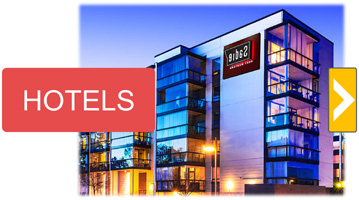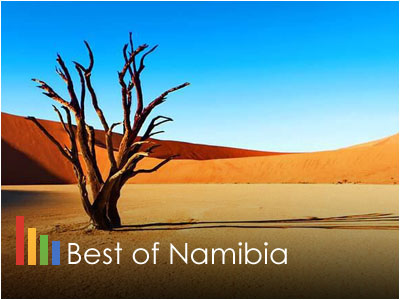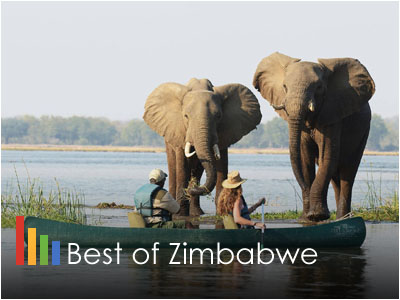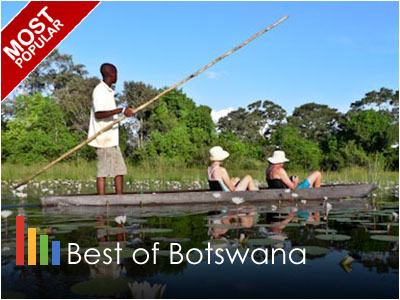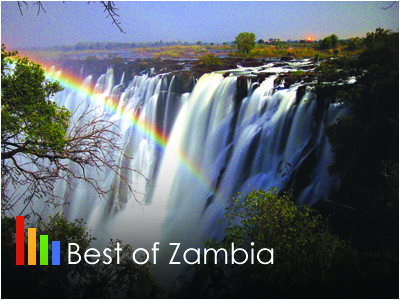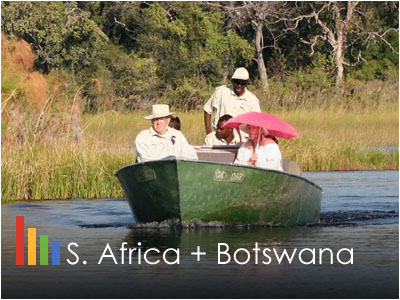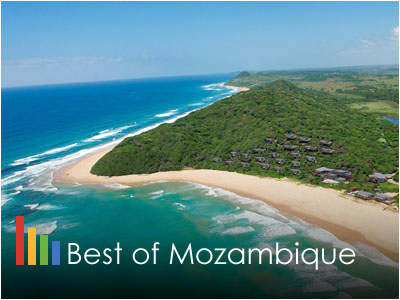Destination Zambia, Africa
Zambia - Victoria Falls & Walking Safaris
Zambia is commonly regarded as one of the most beautiful, friendly, diverse and unspoilt countries on the entire African continent. Aside from the majestic Victoria Falls, Zambia has more natural water resources than any other southern African country, including a myriad of other falls dotted across the country, not to mention the famous Zambezi River. The many National Parks offer great opportunities for observing Africa’s plains game and their attendant predators, whilst bustling urban areas offer a taste of eclectic Zambian culture. Zambia’s charms are many and varied – this landlocked southern African country is home not only to Victoria Falls on the border with Zimbabwe, but also has even more seriously impressive natural sights.

Zambia - Basic Facts
Zambia, officially the Republic of Zambia, is a landlocked country in south-central Africa. Its neighbors are the Democratic Republic of the Congo to the north, Tanzania to the north-east, Malawi to the east, Mozambique to the southeast, Zimbabwe and Botswana to the south, Namibia to the southwest, and Angola to the west. The capital city is Lusaka, located in the south-central part of Zambia. The population is concentrated mainly around Lusaka in the south and the Copperbelt Province to the northwest, the core economic hubs of the country. Zambia, is a country of rugged terrain and diverse wildlife, with many parks and safari areas. On its border with Zimbabwe is famed Victoria Falls – indigenously called Mosi-oa-Tunya, or "Smoke That Thunders” – plunging a misty 108m into narrow Batoka Gorge. Spanning the Zambezi River just below the falls is Victoria Falls Bridge, a spectacular viewpoint. A total of 242 mammalian species exist, with most endemic ones occupying the woodland and grassland ecosystems. The Rhodesian giraffe and Kafue Lechwe are some of the well-known subspecies that are endemic to Zambia. An estimated 757 bird species are known to exist, of which 600 are either resident or Afrotropic migrants; 470 breed in the country; and 100 are non-breeding migrants. The Zambian barbet is a well-known species endemic to Zambia.
More About Zambia - Victoria Falls & Walking Safaris
Zambia is blessed with awe-inspiring natural wonders, an abundance of wildlife, huge water bodies and vast open spaces. Zambia offers unforgettable holidays for the edventourous traveller looking for the real Africa. Acknowledged as one of the safest countries in the world to visit, Zambia's welcoming people live in peace and harmony. And here, in the warm heart of Africa, you will find some of the finest Safari experiences on the planet, including face to face encounters with Nature at its most wild. Spectacular waterways provide adrenaline-thrills or a leisurely playground of activities for all ages. Seventeen magnificent waterfalls, apart from the spectacular Victoria Falls, provide 'cascade followers' an adventure into the remote undeveloped rural areas where a taste of village life can be experienced. Spectacular daily sunsets are almost guaranteed. Here is our pick of Top 10 most popular destinations in Zambia;
Victoria Falls & Livingstone
If you are touring Zambia, then a stopover to see the famous Victoria Falls is an absolute must, though the tourist crowds may be less appealing, the largest waterfall on the planet will not fail to impress. One million liters travel over this cliffside per second when its at its height at the end of the wet season. Sometimes the spray is so strong you will get wet just trying to see it. Livingstone, the urban center on the Zambian side of the falls, is somewhat of a tourist hub for adventurers. Luxury and rustic accommodations alike are offered here, but those looking to pump some adrenaline will find options such as whitewater rafting on the Zambezi River, bungee jumping, riverboarding, and other such activities.
Livingstone, the previous capital of Zambia, was named after probably the most eminent explorer of the African continent who ever lived: David Livingstone. Actually, the place is a suitable memorial to the Scottish expeditionary and anti-slavery campaigner, not least of all because it’s the entrance to the rumbling cascades of the Victoria Falls (Livingstone is said to have been the first explorer to discover this natural wonder). It’s also one of the popular places for safari goers and adventure tourists going forward to Central Africa, popular for its easy access to the ancient Zambezi National Park (in Zimbabwe), and the whitewater slopes of the Zambezi River to boot!
South Luangwa National Park
Zambia's premier safari park, this park is widely considered to be the birth place of the "walking safari". Travelers can spot 4 of the Big 5 here (no rhino), and the wildlife is abundant! The best time to see this park is in the dry season, when wildlife flock to the Luangwa River's banks, the remaining water vein in the area. Lion and leopard as well take advantage of this grouping of wildlife, which can make for a safari that keeps you on the edge of your seat. Many lodges close down in the wet season due to lack of access via dirt roads, and the wild aspect to the South Luangwa bushcamps in the area make for a truly remote experience like the African safaris of old.
Kafue National Park
Visit this newly developed park in Zambia which is also one of the largest parks in terms of area in all southern Africa. Head up to the north on the Busanga Plains for great wildlife viewing in the dry season when the floods dissipate and water is scarce. Other places to spot wildlife are along the Kafue River. Trips to Kafue are best between June and October and most safari camps close their operation during the rest of the year. Enjoy walking, boating and classic safaris here. Spot 4 of the Big 5 (again, no rhino). This reserve lacks giraffe, but does support the ever elusive cheetah and possibly even the African wild dog.
Lower Zambezi National Park
Visit this national park located towards the lower section of the Zambezi River as it flows east towards the ocean. This National Park was once a private game reserve for the president. It's closure to tourists until recent years, difficult to access location, and the boundary with the Zambezi River and Mana Pools Park in Zimbabwe bordering it to the south have helped preserve it as one of the more pristine remaining wild areas in Zambia.
City Life: Lusaka & Kitwe Cities
Lusaka City: It’s the place where Zambia’s go-ahead and entrepreneurs assemble in search of chances. Lusaka is a throbbing economic hub of Zambia. Its markets – like the zigzagged Soweto Market and its composition of shamanist and used car part stalls – burst with babble, as local people bargain their way through the wares. Minibusses are plying up and down the tarmacked roads. You will see new high-rise construction projects marking many of the corners. The lovely Cathedral of the Holy Cross in the heart of the city is worth an imbecile, and so are the signifying displays of the National Museum.
Kitwe City: Sixty four kilometres west of Ndola is Kitwe, the hub of the Copperbelt and the principle industrial and commercial centre of the area. The city owes its existence to the copper mining industry but a considerable number of secondary industries have been established. Planned on modern lines, Kitwe has a large shopping area with hotels, a cinema and theatre. With the upsurge of copper prices in the 1950’s Kitwe developed from a small township to the second largest city in Zambia, obtaining city status in 1966. It then developed as an industrial and commercial area and later an important agricultural area. The good central position of the city in the Copperbelt area made it the most popular choice for industrial developers. Other industries include furniture manufacturing, batteries, clothing, asbestos and cement production, and consumer goods manufacturing. Kitwe also has three well equipped hospitals.
Sioma Ngwezi National Park
Although devastated by reckless poaching in former decades, the reserves of Sioma Ngwezi are back on the up. This natural reserve has been graced with the reinstalled presence of African elephants in recent years. The approximate number of the elephants here is 3,000 and they are largely seen on the park’s southern edge. Spectators will see here all the usual kudus and impala and sometimes if their luck favors they will be able to see rare cheetah. There are some luxury safari lodges to experience here, all within close range to the falling waters of the Ngonye Falls.
Blue Lagoon National Park
Only 100 kilometers from Lusaka, situated Blue Lagoon National park where visitors will find the otherworldly pleasure. Located above the Kafue Flats, this huge floodplain of a reserve throbs between cracked and sunbaked desert in the dry season and green watering hole in the rainy season. When the pearly waters begin to swell that most guests will appear. They go ardent to find rare birds in the canopies of acacias that stand on the little oxbow lakes and lagoons. Or, they go to marvel at the jumping lechwe antelopes as they dance around the forests.
Lower Zambezi National Park
One of Zambia’s more isolated wildernesses, the Lower Zambezi National Park is a place yet intact by the invasion of mass safari going and ecotourism. A combination of muddy banks and miombo gallery woods, the 4,000-square-kilometer region is known for its immense floodplain. This seasonal wetland attracts groups of lions and elephants, buffalo and leopard. All assemble here to water and feed. Lower Zambezi can’t be accessed by paved road, so a 4X4 or a chartered flight connection (a great way to survey the wilds of southern Zambia) is absolutely essential.
Nyika Plateau National Park
The Nyika Plateau National Park is located at the easternmost point of Zambia, which is one of the highest places in the country. The sights from the plateau are wonderful; uneven grasslands with valleys, slopes with plenty of wildflowers, rolling green hills, stony outcrops and tiny tropical forests nestled in the valleys. Elephants, zebra and the red duiker are a few animals that can be seen in the park, although most of the surface area of the park is in nearby Malawi. The only way to access into the park is from the Malawian side, which also has the sole accommodation.
Lake Kariba
Lake Kariba spreads over an area of nearly 2000 km and for many years Lake Kariba’s coastline has provided a weekend entrance from Zambia’s capital city Lusaka. It is located at less than two hours drive (approximately 100km). One of the best ways to bathe in the sun and experience the stunning sunrise and sunsets is on a houseboat, of which there are plenty of opportunities available for rent. For more information regarding Zambia Holiday Travel ideas, DO NOT hesitate to Contact Us.
AfriChoice operates a wide range of carefully designed tours and safaris to Zambia by providing transport and booking a hotel for you. Our safari consultants will always be at your assistance should you need a tailor-made holiday to this unique destination. NB: For more information regarding Zambia Travel, DO NOT hesitate to Contact Us.
Contact Us for more information:
Our Top Southern Africa Trips
-
Best of South Africa
South Africa's Best Spots
-
Best of Namibia Safari
Explore Namib Desert & More!
-
Best of Zimbabwe Safari
Explore Mana Pools and Beyond
-
Best of Botswana Safari
Discover Okavango Delta & Beyond
-
Best of Zambia Safari
Discover Zambia's Secrets
-
S. Africa & Namibia
From Winelands to Namib Desert
-
South Africa & Botswana
From Kruger to Okavango Delta
-
Mozambique Private Locations
Mozambique's Hidden Spots
Other POPULAR Safari Destinations! Explore Our Safari Destinations - EAST AFRICA and BEYOND!
-
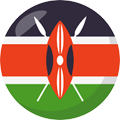
Kenya
KENYA - Traditionally known as the true home of African Safari & Beach Holidays. -

Tanzania
TANZANIA - The land of Kilimanjaro, Serengeti National Park and Zanzibar Islands. -

Uganda
UGANDA - Popular for the Gorilla Tracking Adventures and the source of River Nile. -
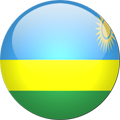
Rwanda
RWANDA - Emerging safari destination also know for it Mountain Gorillas and more. 
Indian Ocean
AFRICAN BEACHES - Know for its Turquise Blue waters and the pristine sandy beaches.-

Others
OTHER DESTINATIONS - We also offer trips to holidays to other African countries of interest.



 Paul Kitching - UK
Paul Kitching - UK Karen Howard - CANADA
Karen Howard - CANADA